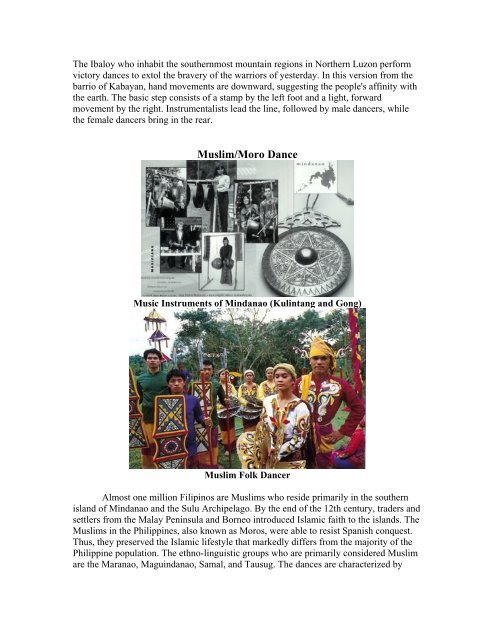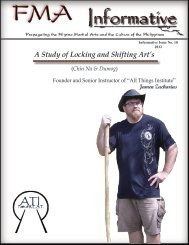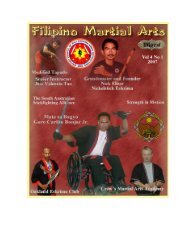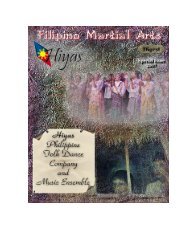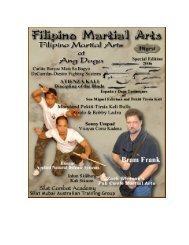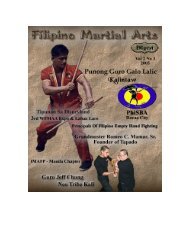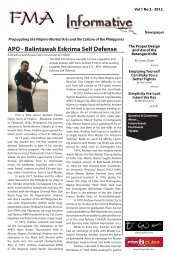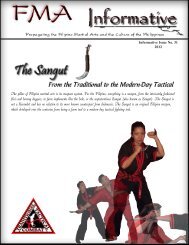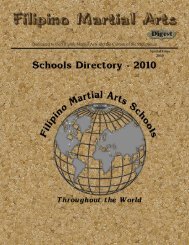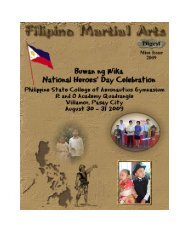Untitled - FMA Informative
Untitled - FMA Informative
Untitled - FMA Informative
You also want an ePaper? Increase the reach of your titles
YUMPU automatically turns print PDFs into web optimized ePapers that Google loves.
The Ibaloy who inhabit the southernmost mountain regions in Northern Luzon perform<br />
victory dances to extol the bravery of the warriors of yesterday. In this version from the<br />
barrio of Kabayan, hand movements are downward, suggesting the people's affinity with<br />
the earth. The basic step consists of a stamp by the left foot and a light, forward<br />
movement by the right. Instrumentalists lead the line, followed by male dancers, while<br />
the female dancers bring in the rear.<br />
Muslim/Moro Dance<br />
Music Instruments of Mindanao (Kulintang and Gong)<br />
Muslim Folk Dancer<br />
Almost one million Filipinos are Muslims who reside primarily in the southern<br />
island of Mindanao and the Sulu Archipelago. By the end of the 12th century, traders and<br />
settlers from the Malay Peninsula and Borneo introduced Islamic faith to the islands. The<br />
Muslims in the Philippines, also known as Moros, were able to resist Spanish conquest.<br />
Thus, they preserved the Islamic lifestyle that markedly differs from the majority of the<br />
Philippine population. The ethno-linguistic groups who are primarily considered Muslim<br />
are the Maranao, Maguindanao, Samal, and Tausug. The dances are characterized by


